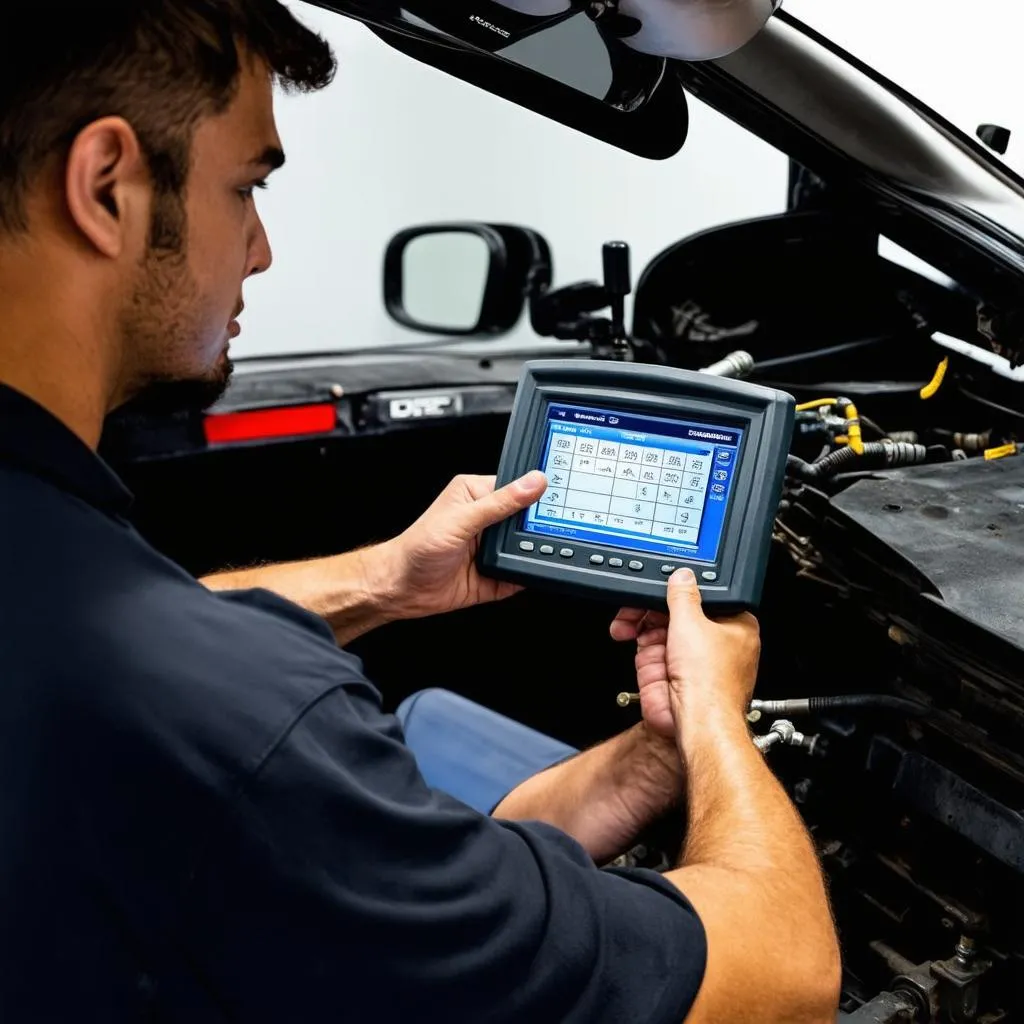Experiencing rough shifting or hesitation in your Direct-Shift Gearbox (DSG)? A DSG adaptation reset using VCDS (Vag-Com Diagnostic System) might be the solution. This procedure recalibrates the transmission control unit (TCU) to your driving style and improves shifting quality.
Understanding DSG Adaptation and the Need for Reset
DSG transmissions are known for their lightning-fast shifts and improved fuel economy. Over time, the TCU adapts to your driving style, learning your shift points and clutch engagement preferences. However, this learning process can sometimes lead to undesirable shifting behavior, such as:
- Rough Shifting: Jerky or abrupt gear changes, especially at low speeds.
- Hesitation: A noticeable delay between gear changes.
- Slipping Sensations: Feeling like the transmission is slipping between gears.
These issues often arise from corrupted adaptation data in the TCU. A reset essentially wipes the slate clean, allowing the TCU to relearn your driving style and optimize shifting performance.
Performing a DSG Adaptation Reset with VCDS
Before you begin, ensure you have a genuine VCDS interface and a compatible laptop.
Step-by-Step Guide:
- Connect and Scan: Connect your VCDS interface to the OBD-II port of your vehicle and establish communication.
- Select Control Module: Navigate to the “Select Control Module” section.
- Choose Transmission: From the list of modules, select “Transmission” (usually labeled as 02-Auto Trans).
- Basic Settings: Go to “Basic Settings” within the Transmission module.
- Initiate Adaptation Reset: Depending on your specific DSG model, you’ll find an option like “Reset Adaptation” or “Clutch Adaptation.” Follow the on-screen prompts.
- Adaptation Drive: After the reset, the VCDS software will typically guide you through an adaptation drive. This involves driving the vehicle under specific conditions to allow the TCU to relearn.
Important Notes:
- Battery Voltage: Ensure your battery is fully charged before starting the procedure.
- Disturbances: Avoid any interruptions during the reset and adaptation drive.
 DSG Transmission
DSG Transmission
Benefits of a DSG Adaptation Reset
A successful DSG adaptation reset can lead to:
- Smoother Shifting: Eliminates rough gear changes and hesitation.
- Enhanced Performance: Optimizes gear selection for better acceleration and responsiveness.
- Improved Driving Experience: Creates a more enjoyable and comfortable driving experience.
Common Questions about DSG Adaptation Reset
Q: How often should I reset my DSG adaptation?
A: There’s no set schedule. It’s recommended if you experience shifting issues or after any work done on the transmission.
Q: Can I damage my transmission by performing a reset?
A: When done correctly, a DSG adaptation reset is a safe procedure. However, using incorrect procedures or uncertified tools can potentially cause harm.
Q: Will a reset fix all transmission problems?
A: While it addresses adaptation-related issues, it’s not a cure-all for mechanical or electrical faults within the transmission.
Seeking Professional Assistance
If you’re uncomfortable performing the reset yourself, it’s always best to consult with a qualified mechanic specializing in VAG vehicles. They have the expertise and equipment to diagnose and resolve any DSG-related concerns. For more information about car diagnostic tools and software, check out the resources available at Cardiagtech.
 Mechanic Using VCDS
Mechanic Using VCDS
Conclusion
A DSG adaptation reset with VCDS can significantly improve your DSG transmission’s performance and overall driving experience. By understanding the process and following the guidelines, you can restore smooth, seamless shifting to your vehicle.
Need further assistance with car diagnostics? Contact CARDIAGTECH for expert advice and a wide range of diagnostic solutions.

